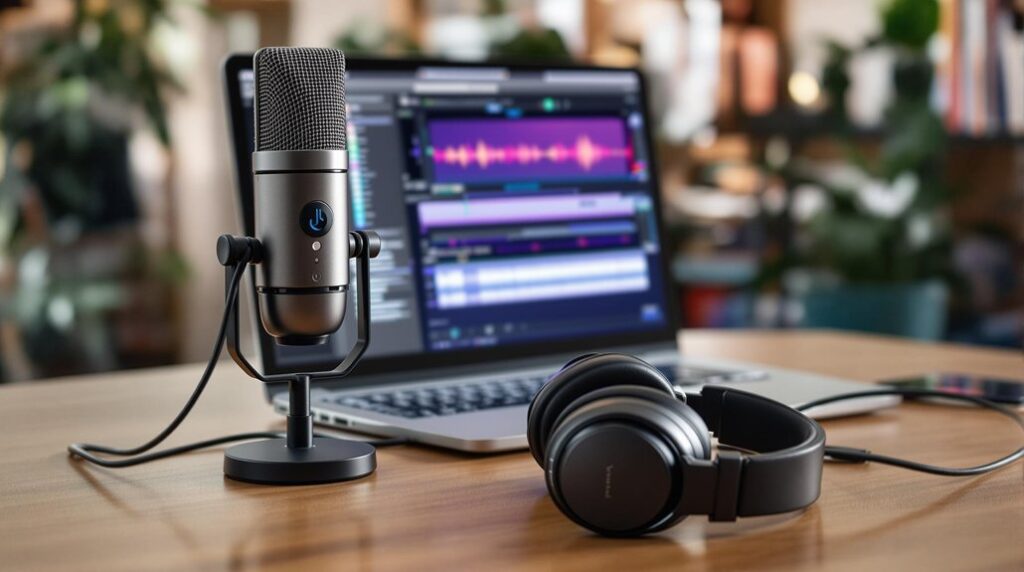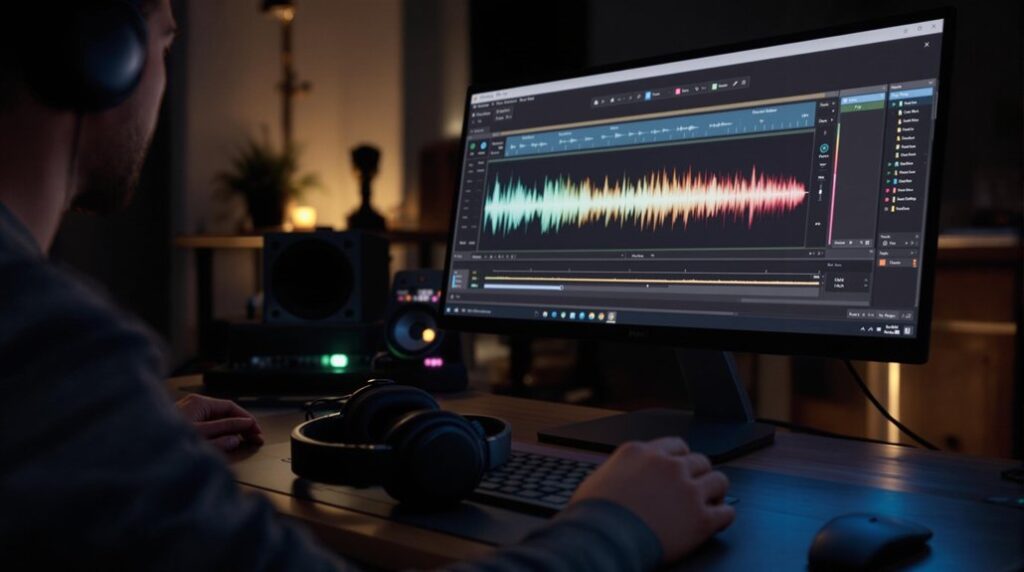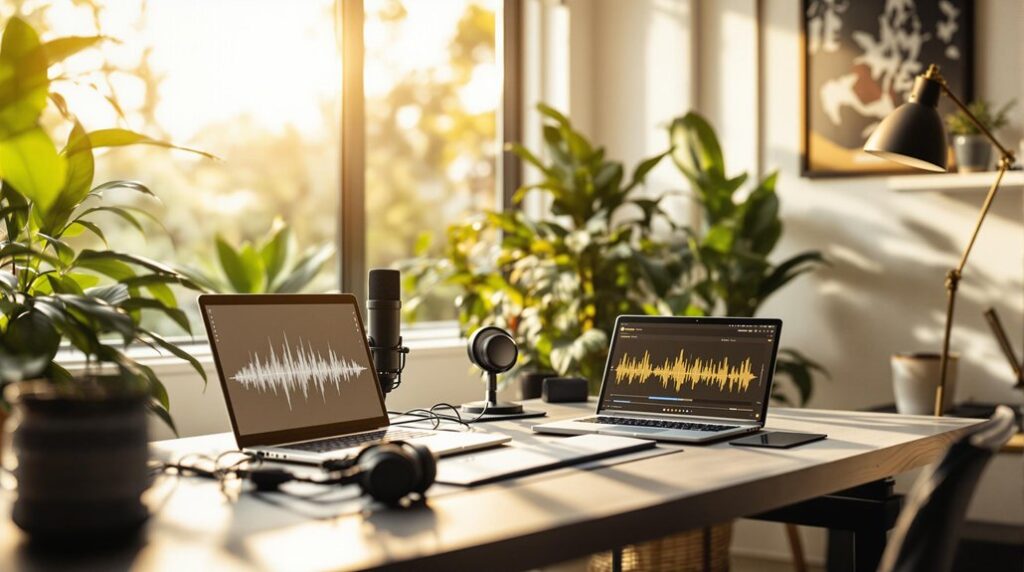To eliminate background noise in Audacity, follow these three simple steps. First, prepare your audio file by importing it and recording a few seconds of silence to capture the noise profile. Next, highlight the silent section, go to the Effect menu, and select “Noise Reduction,” then click “Get Noise Profile.” Finally, select the entire track with Ctrl + A, return to the Noise Reduction settings, and adjust sliders for ideal noise reduction and frequency smoothing. After applying these changes, you’ll achieve clearer audio. There’s more to explore about fine-tuning your settings for the best results.
Key Takeaways
- Import your audio file into Audacity and record a few seconds of silence to capture the background noise profile.
- Select a segment containing only background noise and choose “Get Noise Profile” from the Noise Reduction effect.
- Highlight the entire track and navigate to Effect > Noise Removal and Repair > Noise Reduction to begin the noise reduction process.
- Adjust the Noise Reduction and Sensitivity sliders to classify and reduce the unwanted background noise effectively.
- Use the preview feature to listen to adjustments and fine-tune settings for optimal audio clarity before applying changes.
Prepare Your Audio File
To effectively eliminate background noise in Audacity, you first need to prepare your audio file.
Start by importing your audio file into the program. It’s essential to record a few seconds of silence at the beginning to capture the background noise profile accurately.
Next, highlight a segment of the audio that contains only the background noise. This step allows you to analyze its characteristics.
Access the Noise Reduction effect from the Effect menu to generate a noise profile based on the highlighted section.
Once you’ve captured the noise profile, make certain the entire track is selected before applying the noise reduction.
This process helps achieve a cleaner sound throughout your audio file, enhancing its overall quality. Additionally, using the Noise Reduction tool effectively removes constant noise sources, ensuring a more professional audio output.
Get the Noise Profile
Getting the noise profile in Audacity is an essential step in effectively reducing unwanted sounds. To create an accurate noise profile, follow these steps:
- Select a segment of audio with only background noise.
- Ideally, record a few seconds of silence before speaking.
- Navigate to the Effect menu and choose “Noise Reduction.”
- Click on “Get Noise Profile” to analyze the selected segment.
Remember, the noise profile won’t be retained after closing Audacity.
A minimum of 2048 samples is recommended to guarantee effective noise profiling. Longer selections yield better results in identifying the noise floor.
Apply Noise Reduction Settings
Applying noise reduction settings in Audacity is essential for enhancing your audio’s clarity.
First, click the Noise Profile button after highlighting a segment with only background noise, then navigate to Effect > Noise Removal and Repair > Noise Reduction.
After generating the noise profile, select the entire track by pressing Ctrl + A (or Command + A).
Adjust the Noise Reduction (dB) slider to set the amount of volume reduction for background noises; higher values remove more noise.
Use the Sensitivity slider to classify audio as background noise, but be cautious of removing desired elements.
Finally, tweak the Frequency Smoothing (bands) slider to reduce artifacts, and hit the preview button to listen before applying Noise Reduction.
Frequently Asked Questions
How to Eliminate Background Noise in Audacity?
To eliminate background noise in Audacity, use effective audio editing techniques. Capture a noise profile, apply noise reduction settings, and adjust frequency analysis parameters to enhance sound quality while minimizing artifacts in your recordings.
What Is the Best Way to Remove Background Noise?
To effectively remove background noise, utilize noise reduction techniques in your editing software. Focus on voice clarity by applying audio filters, experimenting with settings during post-production, and following recording tips for enhanced audio quality and sound engineering.
How Do I Make Sound Clear in Audacity?
To make sound clear in Audacity, employ sound enhancement techniques like noise reduction plugins, adjust recording quality factors, and apply voice clarity tips. Focus on microphone placement advice and soundproofing solutions for ideal audio mastering basics.
How to Remove High Pitch Noise in Audacity?
To remove high pitch noise in Audacity, use waveforms analysis for noise reduction. Adjust the frequency spectrum with pitch adjustment techniques, enhancing sound clarity through effective audio editing and utilizing audio plugins for ideal results in sound engineering.
Conclusion
By following these three simple steps, you can effectively eliminate background noise in Audacity. Start by preparing your audio file, then capture the noise profile, and finally apply the noise reduction settings. This process enhances your audio quality, ensuring a clearer listening experience. Remember, a clean audio file not only improves comprehension but also makes your recordings sound more professional. With practice, you’ll quickly master noise reduction techniques and raise your audio production skills.




